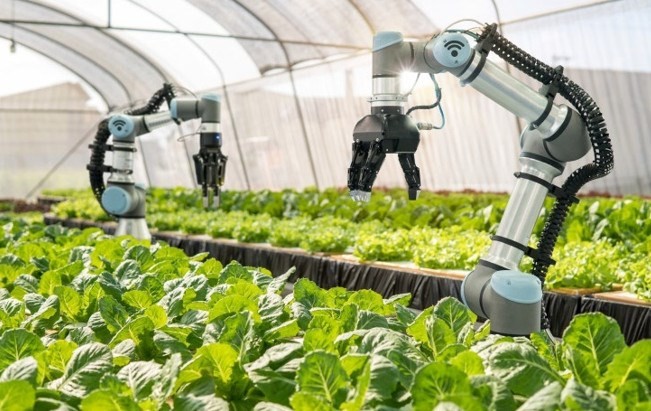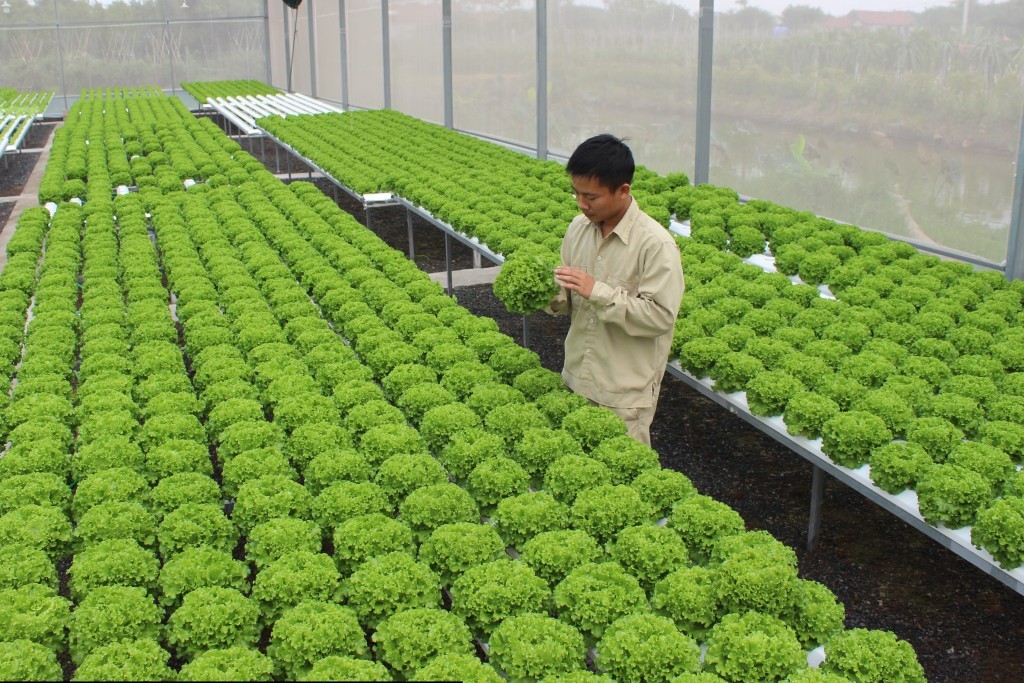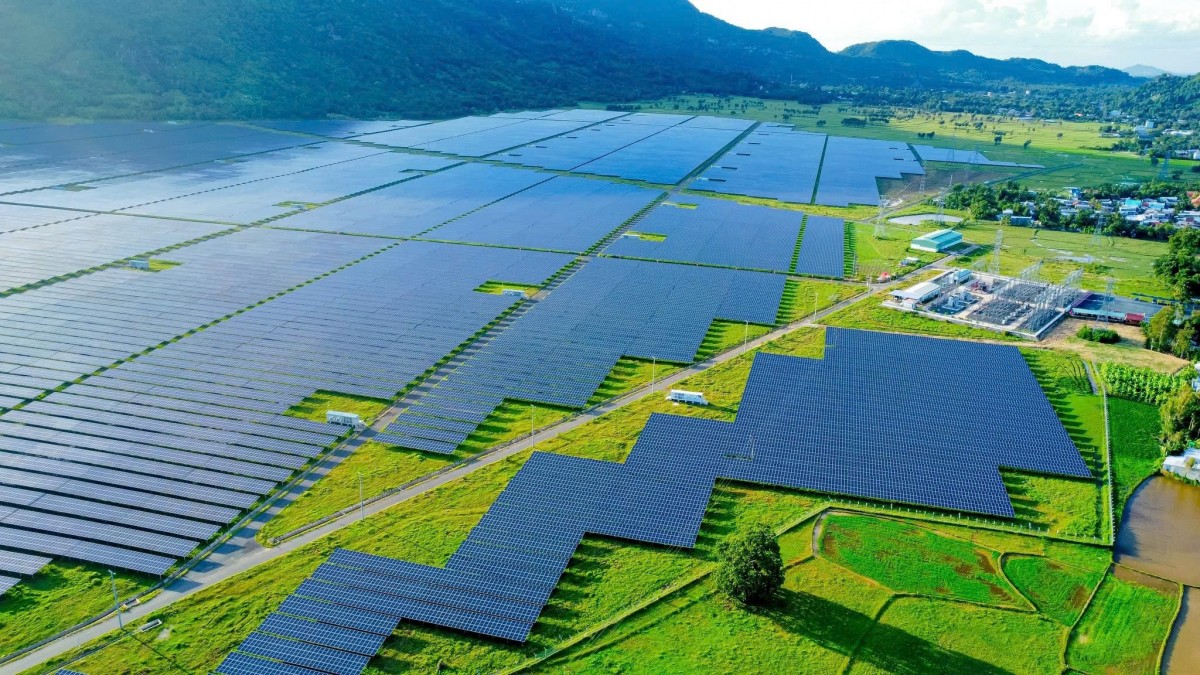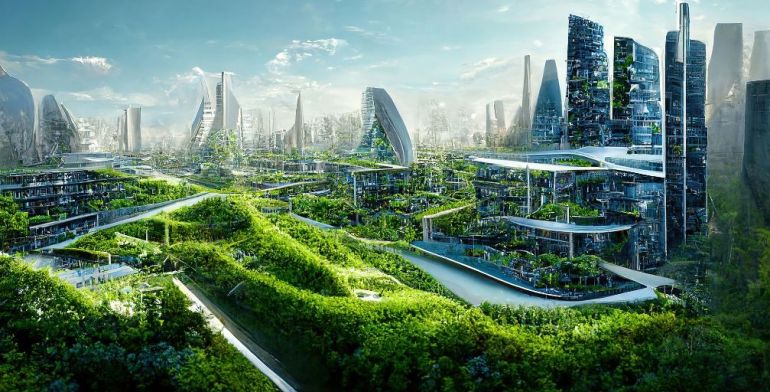Why is it necessary to promote the process of green technology innovation in agriculture?
- 26
- Socially Responsible Enterprise
- 17:32 18/09/2024
DNHN - Green innovation in agriculture is essential to cope with climate change, conserve resources, and enhance sustainable productivity.

Green technology plays an important role in innovation
Green technology is a key driver of innovation, playing a crucial role in reducing environmental impact and improving production efficiency. By applying sustainable solutions such as renewable energy, water-saving irrigation systems, and efficient waste management, green technology not only helps protect natural resources but also creates added value for businesses. This innovation not only drives the green economy but also contributes to global sustainable development.
Agriculture, an essential sector for human survival, is currently facing major challenges. Climate change has been severely affecting crop and livestock productivity. According to the Food and Agriculture Organization (FAO), changes in temperature and uneven rainfall could reduce global food production by 5% to 15% by 2050. At the same time, unsustainable exploitation of natural resources is leading to land degradation, water pollution, and biodiversity loss.
Green innovation is an approach to addressing these issues by applying environmentally friendly technologies and methods. From developing disease-resistant crop varieties to adopting smart farming methods, green innovation provides practical solutions to improve productivity without harming natural resources.
As such, green technology is playing an increasingly important role in promoting innovation in agriculture. These innovations include the use of biotechnology, precision agriculture, and water-saving irrigation systems. One of the standout areas of green technology is biotechnology. Genetically modified crops are being developed to be more disease-resistant and drought-tolerant. For example, BT rice (Bacillus thuringiensis) is resistant to pests, reducing the need for pesticides, thereby minimizing negative impacts on the environment and human health.
Moreover, there is an advanced method that uses sensor technology and big data to optimize farming factors. With precision agriculture, farmers can monitor crop conditions in real-time, adjusting water, fertilizer, and pesticide levels accurately. This method not only increases productivity but also reduces resource waste and pollution.
Finally, in the context of increasing water scarcity, the adoption of water-saving irrigation systems such as drip irrigation and mist irrigation is crucial. These systems help conserve water and ensure adequate moisture for crops, thereby improving production efficiency.
Opening up many opportunities for agricultural businesses
Green innovation not only benefits the environment but also brings clear economic and social benefits. First, green technologies and farming methods help increase productivity and reduce production costs. By optimizing resource use and minimizing waste, farmers can achieve higher profits. Furthermore, the application of green technology also creates new job opportunities in research and development, high-tech equipment manufacturing, and agricultural support services.

Second, using green farming methods helps reduce the amount of chemical pesticides and fertilizers in food. This not only protects consumers' health but also reduces the risk of water and soil pollution. Green agriculture also contributes to reducing greenhouse gas emissions and air pollution, contributing to improving the quality of life for communities.
Third, green innovation makes a positive contribution to environmental protection by reducing soil, water, and air pollution. Sustainable farming practices such as organic farming, cover cropping, and recycling agricultural waste help maintain ecosystem balance and protect biodiversity.
According to statistics, Vietnam's agriculture currently contributes about 12% of GDP and creates jobs for 30% of the labor force. However, this sector is facing serious challenges from climate change, especially the loss of agricultural land in the Mekong Delta due to rising sea levels, predicted to cause losses of up to 3% of GDP annually. To cope, there is a need to shift towards more sustainable and low-emission agricultural production.
Green innovation is the key to solving these problems. Many Vietnamese businesses have adopted green technologies such as drip irrigation, smart greenhouses, and renewable energy, helping to reduce CO2 emissions, save up to 50% of water, and increase crop productivity by 20% to 30%. Vietnam also aims to reduce greenhouse gas emissions by 9% by 2030 and achieve net-zero emissions by 2050, with green innovation playing a crucial role.
However, green technology innovation faces many challenges, including a lack of high-quality human resources and experts in the agricultural sector, along with a high percentage of untrained rural labor.
Therefore, to overcome these challenges, it is necessary to train farmers in advanced farming methods, sustainable management, and efficient resource use, while also improving access to green technology and investment capital. Additionally, the lack of policies and regulatory frameworks supporting green innovation in many countries is a significant challenge. Some countries do not have clear legal frameworks or specific mechanisms to support sustainable agricultural activities. This needs to be addressed by developing and enforcing policies and regulations that support green innovation. Governments should establish clear environmental regulations while facilitating the deployment of green technologies through tax incentives, research and development support programs, and encouraging private initiatives in green agriculture. These policies will not only promote the adoption of green technologies but also create a more business-friendly environment for companies and farmers.
Overall, to successfully implement green technology innovation, close coordination between stakeholders is required, including governments, businesses, farming communities, and international organizations. By providing financial support, technical training, and developing clear legal frameworks, we can overcome current challenges and create favorable conditions for the sustainable development of global agriculture.
Nghe Nhan
Related news
- Practical applications of carbon credits in the economy. Part XXI:Carboncor Asphalt - An effective solution for Vietnam to achieve net zero emissions
- Practical applications of carbon credits in the economy. Part XI: Bridging policy and strategy for the carbon credit market
- Practical applications of carbon credits in the economy. Part XIX: Training human resources - A strategic and urgent task for the carbon credit market
#environmental protection

Reducing greenhouse gas emissions and carbon market development to fulfill COP 26 commitments
Vietnam aims to reduce greenhouse gas (GHG) emissions and develop a carbon market, aligning with its COP 26 commitments. This requires close coordination and comprehensive solutions from all sectors and communities.

What can be learned from VinFast's success after becoming the best-selling car brand in Vietnam?
VinFast's market-leading sales in Vietnam in September marked a major turning point, as a domestic electric vehicle brand outpaced international competitors.

Nurturing life for the future with clean energy
Vietnam has just endured Typhoon No. 3, leaving behind a trail of destruction and loss that makes us all feel small against Mother Nature. It is time for a change, time to nurture and protect our living environment.

Practical applications of carbon credits in the economy. Part XXI:Carboncor Asphalt - An effective solution for Vietnam to achieve net zero emissions
Vietnam is actively implementing green construction solutions to achieve the goal of net zero emissions by 2050. These solutions reduce greenhouse gas emissions and support sustainable development in the construction industry.

Practical applications of carbon credits in the economy. Part XI: Bridging policy and strategy for the carbon credit market
To develop the carbon credit market, the Government and businesses must improve cooperation and communication. The Government needs to provide clear policies, while businesses must adopt emission reduction strategies and leverage carbon credits.

Yen Bai: Implementing the plan to manage and eliminate ozone-depleting substances and greenhouse gases
The People's Committee of Yen Bai province has just issued document No. 3005/UBND-TNMT on the implementation of the National Plan for the management and elimination of ozone-depleting substances and controlled greenhouse gases.
Đọc thêm Socially Responsible Enterprise
When artists do business – livelihood is no poetry!
A series of indictments, arrests, and bankruptcies among artists has sounded a serious alarm.
Hanoi’s economy grows 7.92% in first nine months of 2025, FDI surges nearly threefold
Hanoi maintained robust growth momentum in the first nine months of 2025 with GRDP up 7.92% year-on-year, driven by strong services and construction sectors.
Vietnam’s strong gdp growth fails to ease labor market distress
As the year draws to a close, the pressing challenge for businesses and policymakers is how to rebuild worker morale, retain top talent, and stabilize employment amid lingering uncertainty.
Vietnam ramps up efforts to lift EU “Yellow Card” on Illegal fishing
Prime Minister Pham Minh Chinh has called for intensified and coordinated efforts to have the European Commission’s “yellow card” on Vietnam’s fisheries removed within this year.
Quang Tri calls for investment in wind power plant project worth over VND 1,100 billion
The People’s Committee of Quang Tri Province has officially announced the Hưng Bắc Wind Power Plant Project as part of its investment invitation portfolio.
Hanoi receives two million visitors during the four-day National Day holidays
From August 30 to September 2, Hanoi received around 2.08 million visitors during the four-day National Day holidays , three times higher than the figure in the same period last year, the municipal Department of Tourism reported.
Ca Mau gradually makes its mark on the national tourism map
By 2025, Ca Mau aims to attract 8.4 million visitors and achieve a total revenue exceeding 8,585 billion VND, contributing to the province's double-digit growth target.
UNDP Resident Representative hails Vietnam as an emerging economic powerhouse
Millions of people have been lifted out of poverty, hunger has been eliminated, and the economy has maintained consistent growth rates of over 6 per cent, UNDP Resident Representative in Vietnam Ramla Khalidi remarks.
Alpha Books Chairman Nguyen Canh Binh: The survival weapons of Vietnamese entrepreneurs in the age of AI.
Alpha Books Chairman Nguyen Canh Binh shares three essential lessons to ensure the survival and growth of Vietnamese entrepreneurs in the digital age: creativity, connection, and collective intelligence.
Mr. Le Viet Thang, CEO of 1Office: "Don’t use old solutions for new ai challenges"
As artificial intelligence (AI) reshapes the global technology landscape, Vietnam is taking decisive steps to establish a National AI Research and Development Center, alongside the National Data Center.











